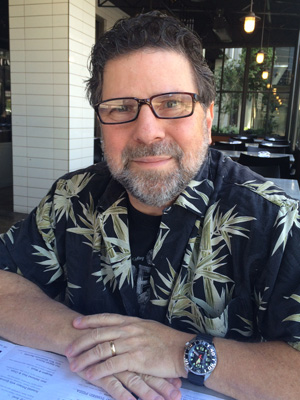Lee Rose looks back on a rockin’ career
Date Posted: 4/25/2016

Written by Marshall Bissett
"I can't believe that I am planning my 31st
New Year's Rockin' Eve
show. I can still remember getting my first $100 design fee back in 1970," says Los Angeles-based lighting designer and director of photography Lee Rose. In a 46-year career that has tracked most of the seminal changes in the lighting industry, it's hard to find a medium he has not mastered.
Raised in the University Heights neighborhood of Cleveland, Rose can thank his grandfather, a motion-picture projectionist, for pointing him towards dusty theaters and complicated bright lights. "In those days I would skip English class to work backstage at the Heights Youth Theater," laughs Rose. "I was hopeless in scene shop, so I got interested in the old auto-transformer console and did shows with the local Jewish Community Center and the Cleveland Ballet Guild." When the family moved to Phoenix, Rose embellished his resume enough to land a job as assistant lighting designer at The Little Theatre, and his first paid design for Cole Porter's
Anything Goes
.
By 1970, and back in Cleveland, Rose turned his attention to the local club scene, building small rigs for local bands whose names might only now appear as Jeopardy answers - Eric Carmen and the Raspberries and the Michael Stanley Band who passed through the iconic Agora Ballroom. A friend convinced him to build a touring system for a little-known band called Boston, which later led to a national tour and a meeting with Richard Oshen who would become his business partner in the firm of Oshen Rose Design. "Neither of us wanted to be bouncing around in a tour bus when we were 70 years old, so Richard suggested we start a TV lighting company," says Rose.
By the mid-80s, the world could not get enough of the new medium of the music video where - with limited camera technology - the designers struggled to provide light levels for broadcast without destroying the nuances of the live performance. Oshen and Rose carved a niche in this market and got a crash course in lighting for television that led to lighting award shows and specials for Dick Clark Productions. "There is no question that my background in rock and roll really helped smooth out the conflicts that we often faced," recalls Rose. That era was dominated by the ETC Expression® consoles and Rose was quick to catch on: "I am proud to say that I still know how to run Expression 1, 2 and 3. They were the 'go-to' consoles and we specified them for everything, because they never broke."
When ETC
Source Four® fixtures
came on the market, Rose was ecstatic: "We were able to get two fixtures on a 1000-watt dimmer with less chromatic aberration, great optics, a better reflector and a tighter point source." In 2011, while working on the
Chelsea Lately
show, Rose based his studio design around Source Four, and by 2012, was using the
Source Four LED Tungsten
as his 'workhorse' fixture. Shortly after, the now-famous 'Hawaiian shirt' demo converted him to the
Source Four LED Series 2 Lustr®
. "The seven-color technology really smooths out the peaks and valleys in transmission, and that makes a huge difference to the camera," adds Rose.
Rose's admiration for ETC is not limited to fixtures and consoles: "The company still has a personal feel and attitude. There is a consistency there that is hard to find these days. I heard that Fred took everyone to the Star Wars movie, and that impresses me as much as any product!"